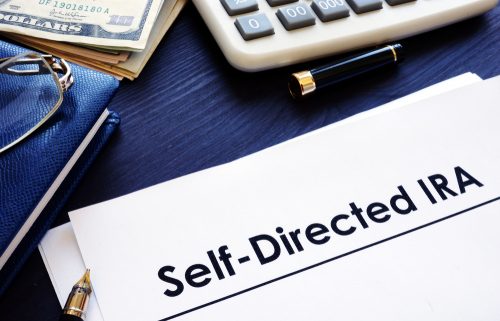The Best Self-Directed IRA Definition
When someone asks you about a Self-Directed IRA, admit it: it can be difficult to figure out exactly how you should word it. What’s the thirty-second elevator pitch? Heck, you can be highly experienced in real estate investing, private LLC investing, and more—yet when push comes to shove, do you really know how to define a Self-Directed IRA to someone who hasn’t heard about it before? To that end, we’ve decided to put together an easy-to-understand summary of what you can expect out of a Self-Directed IRA.
The Self-Directed IRA: A Quick Definition
Let’s start with the easy definition.
A Self-Directed IRA is a retirement account in which an individual works through a custodian to open up a variety of alternative investment classes within a retirement portfolio.
Sure, there is a lot more you can learn about them, but that about sums it up. A Self-Directed IRA is a retirement account like any other. But the way you structure it will look different; by working with a Self-Directed IRA administration firm like American IRA, you can have the custodian on the account handle the administration and paperwork while you make the decisions. With this custodian in your corner, it’s then possible to invest in the full gamut of potential asset classes allowed by the IRS. That includes certain types of real estate, precious metals, private companies, tax liens, cryptocurrencies, and much more.
When someone is asking you how you were able to save so much for retirement, you might simply give them this definition. Many people understand that diversification is good within a portfolio, for example—but they don’t really see the true power of diversification until they realize that there are more assets available to them than the stock market. With a Self-Directed IRA, that’s exactly what you do: you open yourself up to more possibilities because rather than diversifying your stock portfolio, you’re diversifying your entire investment portfolio.
How Is a Self-Directed IRA Different than a Regular IRA?
Typically, a regular retirement account is one in which an investor places investments in stocks, bonds, CDs, and other traditional financial instruments. These are easy to monitor and track, which makes it easier for brokerages to offer IRAs with minimal upkeep and administrative work on their end.
Because a Self-Directed IRA requires more administrative work—i.e., more paperwork—the investor typically has to seek out a custodian who can handle that aspect of the duties. For example, an investor might seek out American IRA, an IRA administration firm, to handle the administration on an account that has investments in real estate and precious metal assets. American IRA’s experience in dealing with these assets—and the administration that requires—makes us an ideal partner for someone who’s new to Self-Directed IRAs who wants to make sure that they invest on solid footing.
Put it all together and a Self-Directed IRA is simply a vehicle for investing in a wider range of retirement assets. You may have something specific in mind—such as investing in real estate because of your background in that asset class—or you may simply want to open your portfolio to broader categories. However, whatever your goal, an IRA affords you the freedom to take hold of your own financial reins, working through a custodian who carries out your transaction orders on the IRA’s behalf.
Interested in learning more about Self-Directed IRAs? Contact American IRA, LLC at 866-7500-IRA (472) for a free consultation. Download our free guides or visit us online at www.AmericanIRA.com.








